Shower time is like a balm to the soul. Whether you’re in the mood to host a shower concert, needing to relax after a long day at work, or getting ready to watch your favorite true-crime documentary with a tub of Ben & Jerry's, this water spraying time will set you up for success. Just think about it: you’ve got your favorite music blasting, perfectly fragranced body soap on hand, a sugar scrub from your mom if you’re feeling spicy, and moldy loofahs.
(insert screeching brake sound here)
Who invited a moldy loofah to the bathroom party?! There’s already a massive debate between loofah-lovers and loofah-haters, and now this?
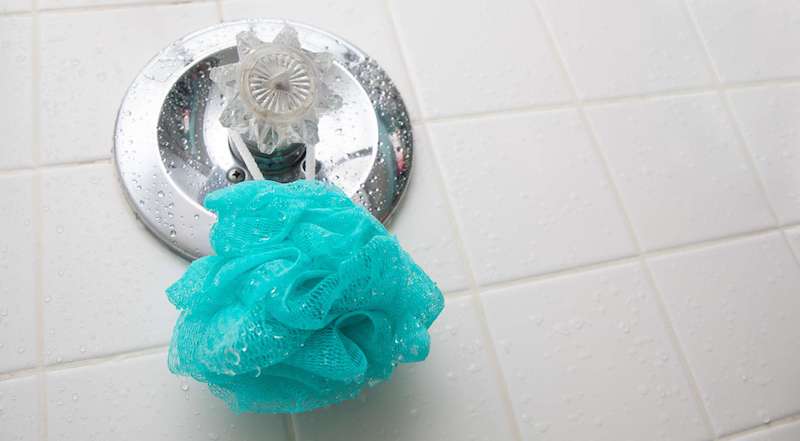
Unfortunately, this fungus catastrophe can happen in the blink of an eye and put a serious damper on our relaxation time. Not to mention, it is anti-beneficial to our health and that makes it a serious no-no for our showers! Avoiding a moldy loofah may not have been part of your shower routine before, but hopefully, the thought of scrubbing on fungus is enough to make you go "yehck" and bump it up to a top priority.
But Why Moldy Loofahs, Though?
The exfoliating magic of these little scrubby sponges is due to their porous texture. Aka, they have a ton of teeny-tiny little holes that help it scrub off dead skin cells. That being said, all of those holes can then trap those particles, plus any soap that you use. It’s about as sanitary as it sounds, unfortunately.
Loofahs are also doused with water every single day and live in a moisture-rich room. Not to mention, they probably don’t get the opportunity to dry out as much as they should. Combine that with the particles mold loves to eat and you’ve got a moldy dream home on your hands.
Not exactly the extra cleaning step we’re going for during that coveted shower time.
The Makings of Moldy Loofahs: A Dream Home
So, what does mold consider a perfect living environment? Let’s break it down.
Every single one of the 100,000+ species of mold identified so far reproduces by creating microscopic spores, similar to the seeds a dandelion releases.¹’² These little spores embark on their life journey by riding the air current wherever that may lead. Even right into our own homes. Typically, that’s not a problem. They’ll just hang out or get filtered out by your HEPA air filter. However, if they find a cozy little habitable area, they’ll put down roots (literally) and start to grow. See? Just like a weed!
Spores, being the hardy fungus that they are, only need four things to survive and thrive: ³
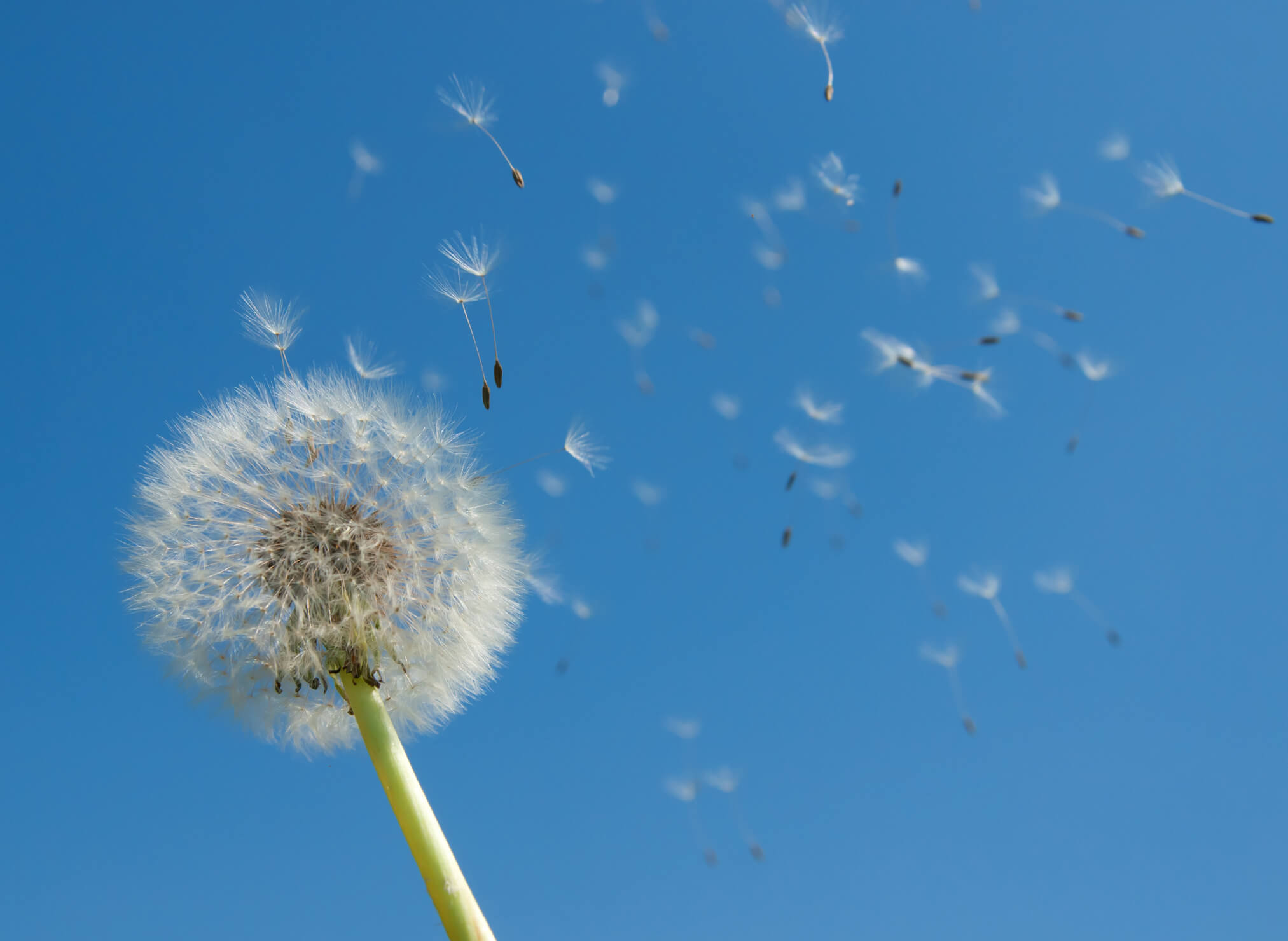
- Oxygen (this barely counts because they hardly require any)
- Temperature (40-90 degrees Fahrenheit is ideal, but some like the extremes)
- Food (like teenagers, they eat almost anything)
- Moisture (the often missing ingredient)
Your loofah hanging out in the bathroom ticks every single one of those boxes, which makes it a perfect moldy oasis! There are tons of water opportunities, foody particles in the form of dust, skin cells, and shower products, abundant oxygen, and a temperature-controlled room that routinely gets all warm and toasty. When a mold spore pictures a dream home, that’s pretty much what it imagines.
Before you know it, poof, moldy loofahs are born.
Not A Healthy Alternative
When a mold spore begins to grow, it immediately starts to release more spores into the air. Some can also release microscopic toxins called mycotoxins, which are double-trouble for our health. ⁴
Indoor mold growth releasing all of those particles into our air is bad for a few reasons.
A high volume of spores in the air means there’s a higher chance that they’ll stumble on another place they can call home and start to colonize. This starts the process all over again, except now you’re dealing with two mold factories. With the bathroom being constantly bombarded with water, chances are that one mold problem will quickly spiral into multiple issues, and that’s not even including other opportunities in different rooms of your home.
On the other hand, the high number of spores and toxins in the air are small enough to make their way into your lungs. Your immune will attempt to fight off all of those foreign particles, but it will eventually get bogged down, causing potential exposure-induced health problems. ⁵’⁶’⁷’⁸
Researchers are still attempting to figure out exactly to what extent mold exposure affects our health, but with over 100,000 species, variable mycotoxin presence, and immune system status, it’s a hard answer to nail down. Not to mention the role genetics, volume of contaminants, and exposure time play.
What they do know is that anyone with compromised immune systems or developing immune systems is at greater risk of developing symptoms faster and to a greater extent.
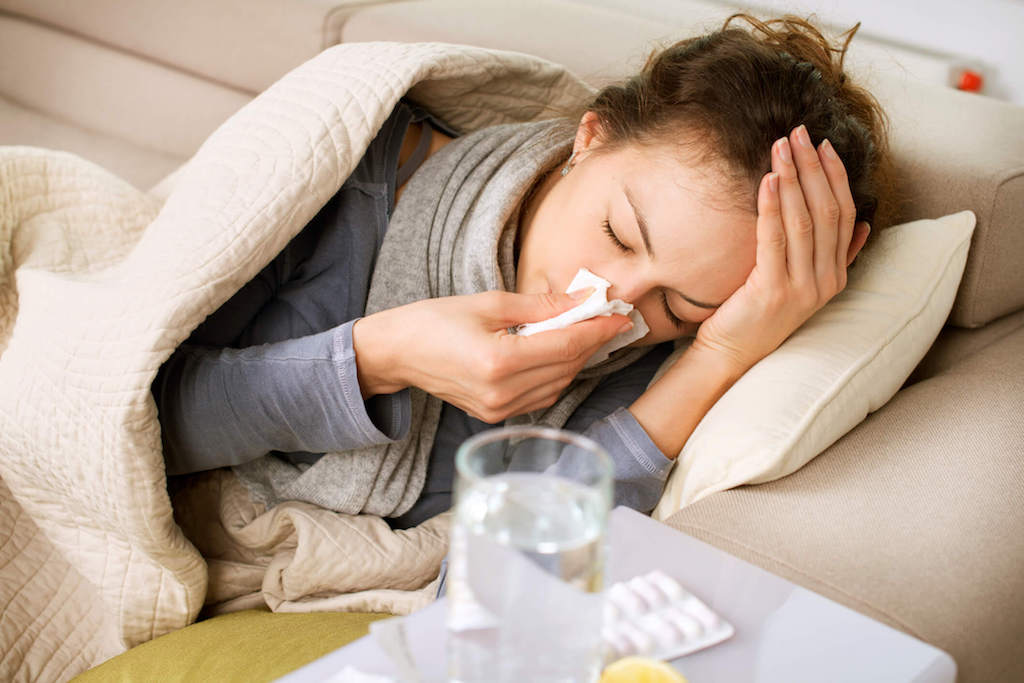
These symptoms can include:
- Brain fog
- Coughing
- Respiratory issues
- Chronic fatigue
- Digestive problems
- Headaches
- Neurological issues
The potential for symptoms to develop is enough of a reason to actively work towards preventing moldy loofahs. Not to mention, you’re not just breathing in mold spores, you’re also rubbing them on your skin. That’s icky and bad for your health. To make matters worse, bacteria may also be along for the ride and be joining the microscopic particle party.
In short, moldy loofahs are bad news.
Preventing Moldy Loofahs
This maaaay sound controversial, but the best way to avoid a moldy loofah is to give up that trusty scrubby sponge and opt for another accessory like a washrag. It’s not ideal for the loofah-fanatics out there, but alternatives like washrags can be thrown into the wash after use and dried properly, which helps prevent mold growth.
For those who absolutely have to have that trusty scrubbing friend, the steps below can help ensure you’re not enabling a moldy wonderland!
1. Swish and Flick
The first addition to your loofah maintenance plan should be thoroughly rinsing it off after use. This will help get rid of all the little skin cells, bath product particles, and whatever else managed to slide through one of the bazillion holes the loofah contains. After rinsing, shake it vigorously to get as much water out as possible, even from deep within the depths of that porous scrubber. Dabbing it with a towel to remove even more moisture is also not a bad idea!
2. Leave To Dry
Properly storing the loofah after use is of the utmost importance! Do NOT just leave it on the edge of the tub to dry. This will result in pooled water and a loofah that never actually gets aired out, which is a spore’s daydream. Instead, hang it up somewhere other than inside the shower. The less-moist air outside of the shower will help promote faster drying so that the spore never gets the chance to live. All it takes is 24 hours on a wet surface for a spore to join the world of the living.
3. Create Ideal Bathroom Conditions
Speaking of reducing moisture, actively working on creating a better bathroom environment can also work wonders in helping avoid a moldy loofah. This includes turning on the exhaust fan and cracking the bathroom door while showering to create airflow, keeping humidity levels between 30 and 50 percent, drying all bath accessories, wiping up spills, and cleaning frequently. ⁹ The goal is to decrease the number of wet opportunities these moisture-rich rooms provide and eliminate as many moldy food sources as possible.
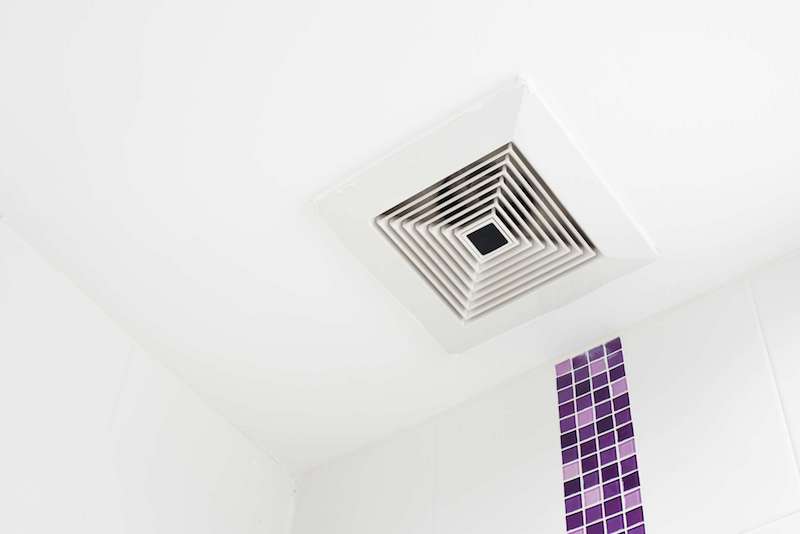
These steps help prevent moldy loofahs for a few reasons: 1) fewer areas for mold growth means that the chances of a rogue mold spore finding your loofah are lower and 2) less moisture in the air helps ensure your loofah dries properly. It’s all about setting the stage for success.
4. Keep That Accessory Sparkly Clean
Mold spores are everywhere, which means that no matter how hard you work to prevent livable conditions, sometimes the stars align, and a lucky one will sneak in and start to grow. Mold growth happens! To help prevent this and get rid of any unwanted particles, the loofah needs a good cleaning at least once a week. Soak the loofah in a white vinegar solution for about 30 minutes and then do a few quick squeezes and swooshes through the solution before removing it. Rinse well after the soak and then allow the loofah to dry completely. Vinegar is a descaler as well as an antifungal, so it will help kill the mold and lift any mold particles from surfaces they’re stuck to. It’s pretty much a rockstar mold fighter.
5. Replace and Replace Often
One of the best things you can do is to replace that loofah often. Eventually, no matter how hard you work, that loofah will inevitably become yucky. Experts suggest replacing all-natural loofahs at least once every 3–4 weeks and synthetic loofahs at the two-month mark. ¹⁰ To avoid moldy loofahs, though, the more often you replace them, the better. A clean slate is much better than chancing a moldy shower catastrophe.
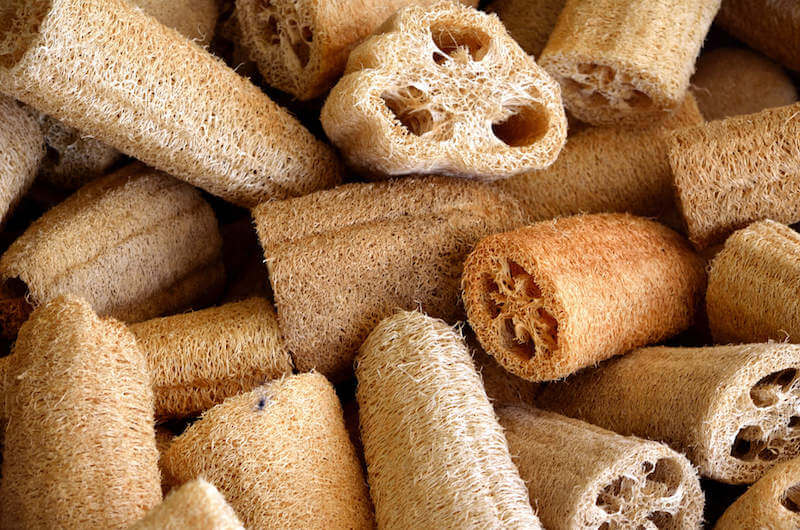
Ew Is That Mold?
If you happen to glance down while showering and see visible mold on your beloved loofah, have a 30-second freak-out, and then throw that sucker away! You could try to clean it, but it’s an object you use to scrub your body. It’s much better to be safe than sorry, which means tossing it and replacing it with a fresh one. Also, make sure to thoroughly clean your bathroom afterward to remove any mold spores or toxins that might have been released from that mold factory.
Again, though, the best way to avoid moldy loofahs is to just not use one. Instead, opt for a cleaning accessory that isn’t so easily moldable.
Keeping Our Shower Time Our Happy Time
Society may not consider mold often, but this tenacious fungus can pop up anywhere and at any time. Actively working to prevent mold growth in all areas of our home, especially on items we use every day, should be something we prioritize. It’s for our health!

Not to mention, showering with moldy loofahs doesn’t really set the stage for relaxing, belting out our favorite tunes, or scrubbing away the funk of a stressful day. They’ll probably send you into a panic attack instead. So, the next time you’re in your shower and reaching for that loofah, consider going with an alternative accessory or make sure that your favorite body scrubber is properly taken care of.
Then, let your mold-free shower time solo concert commence!
Citations:
- Environmental Protection Agency. (n.d.). Mold. EPA. Retrieved from https://www.epa.gov/mold.
- Centers for Disease Control and Prevention. Basic facts about mold and dampness. Centers for Disease Control and Prevention. Retrieved from https://www.cdc.gov/mold/faqs.htm.
- Lstiburek, J., Brennan, T., & Yost, N. (2002, January 15). Rr-0208: What you need to know about mold. Building Science Corporation. Retrieved from https://www.buildingscience.com/documents/reports/rr-0208-what-you-need-to-know-about-mold/view.
- World Health Organization. (n.d.). Mycotoxins. World Health Organization. Retrieved from https://www.who.int/news-room/fact-sheets/detail/mycotoxins.
- Environmental and Occupational Health Assessment Program, & Environmental and Occupational Health Assessment Program, & Health Science Section, Mold Basics for Primary Care Clinicians (2009). Hartford, CT; Connecticut Department of Public Health. , H. S. S., Mold Basics for Primary Care Clinicians 1–10 (2009). Hartford, CT; Connecticut Department of Public Health.
- Curtis, L., Lieberman, A., Stark, M., Rea, W., & Vetter, M. (2004). Adverse health effects of indoor molds. Journal of Nutritional & Environmental Medicine, 14(3), 261-274.
- Bush, R. K., Portnoy, J. M., Saxon, A., Terr, A. I., & Wood, R. A. (2006). The medical effects of mold exposure. Journal of Allergy and Clinical Immunology, 117(2), 326-333
- Fisk, W. J., Lei-Gomez, Q., & Mendell, M. J. (2007). Meta-analyses of the associations of respiratory health effects with dampness and mold in homes. Indoor air, 17(4), 284-296.
- EPA. (n.d.). A Brief Guide to Mold, Moisture, and Your Home. EPA. Retrieved from https://www.epa.gov/mold/brief-guide-mold-moisture-and-your-home#tab-6.
- Team, F. H. (2020, October 6). Do you know what's growing on your loofah? Cleveland Clinic. Retrieved December 21, 2021, from https://health.clevelandclinic.org/loofahs-can-double-as-bacterial-breeding-grounds/#:~:text=Replace%20it%20regularly.,new%20one%2C%E2%80%9D%20she%20says.

